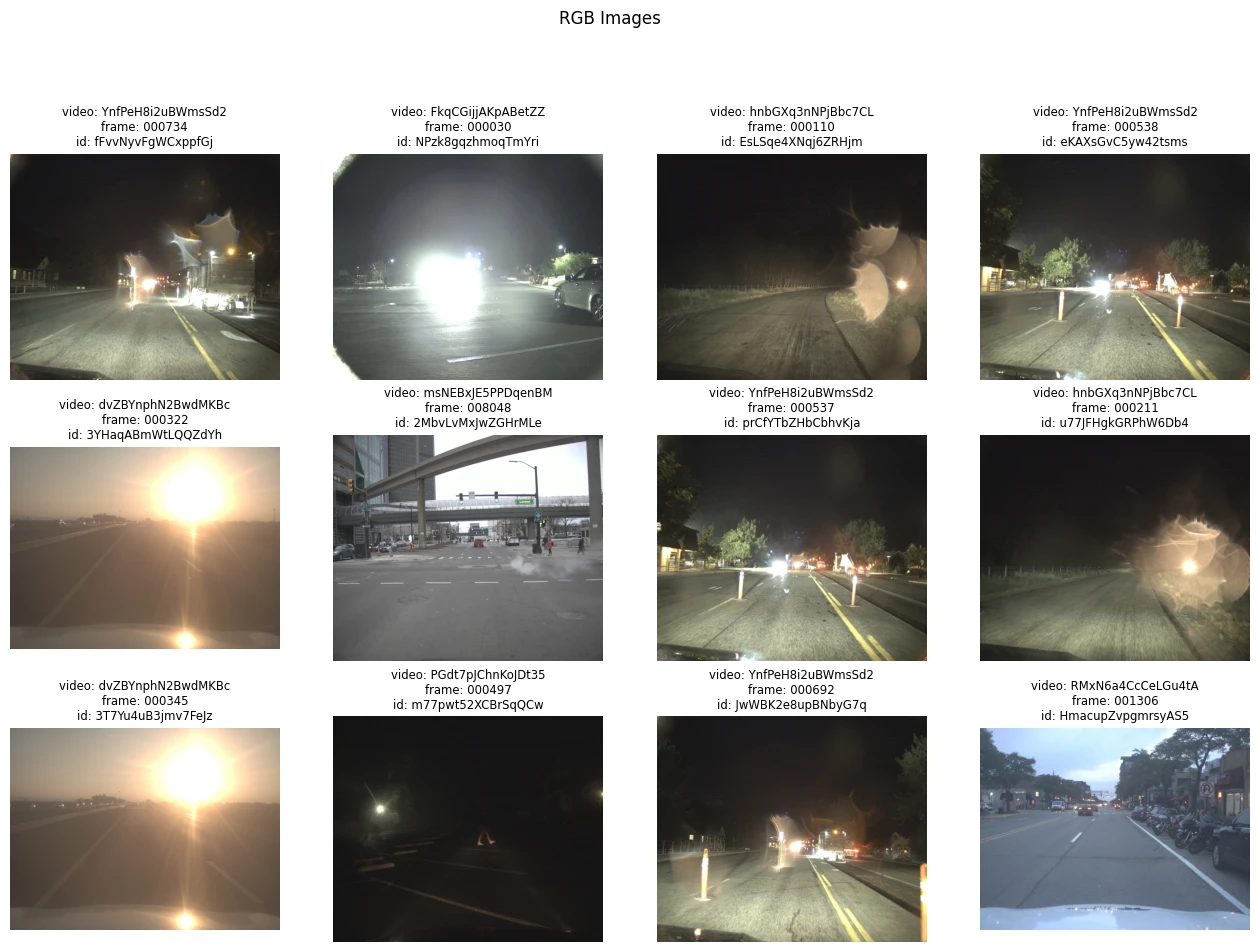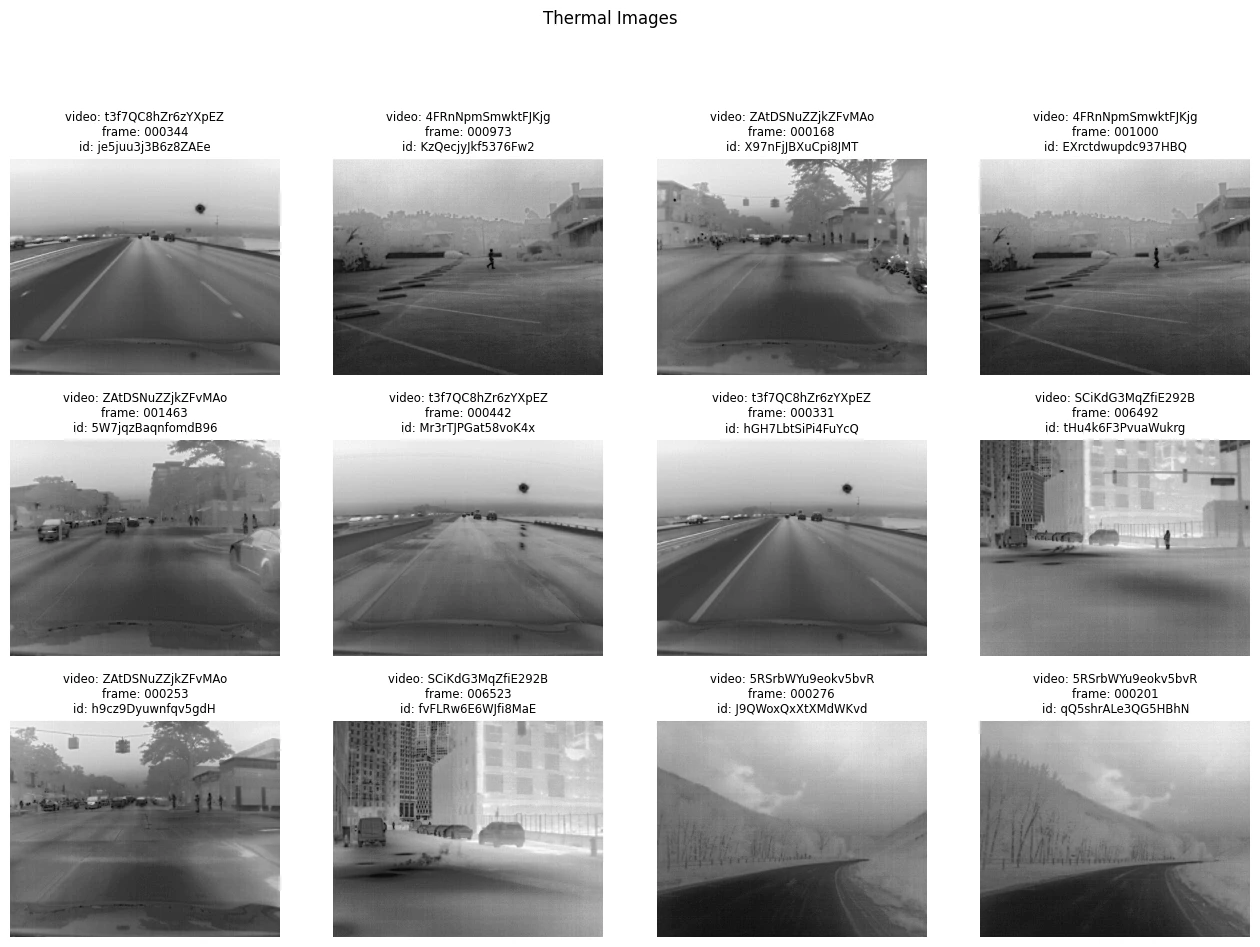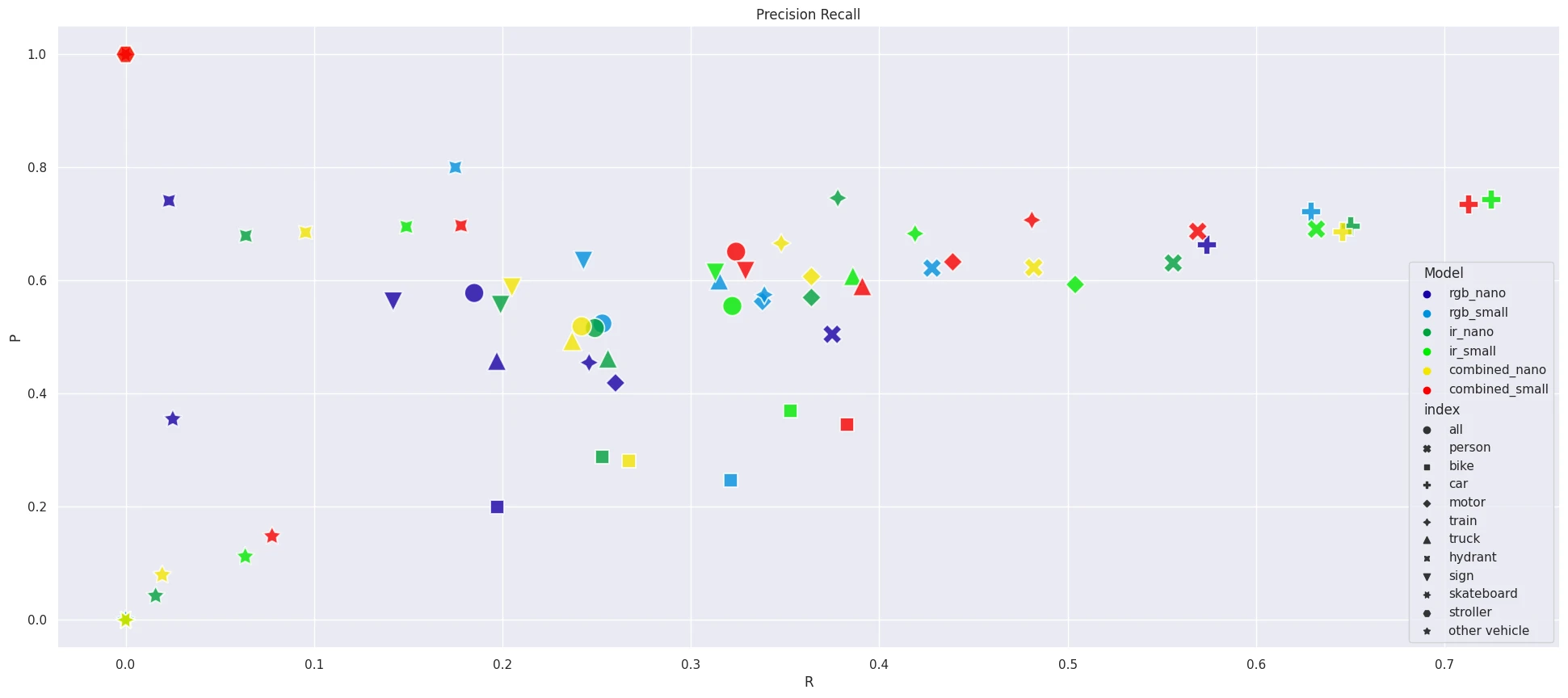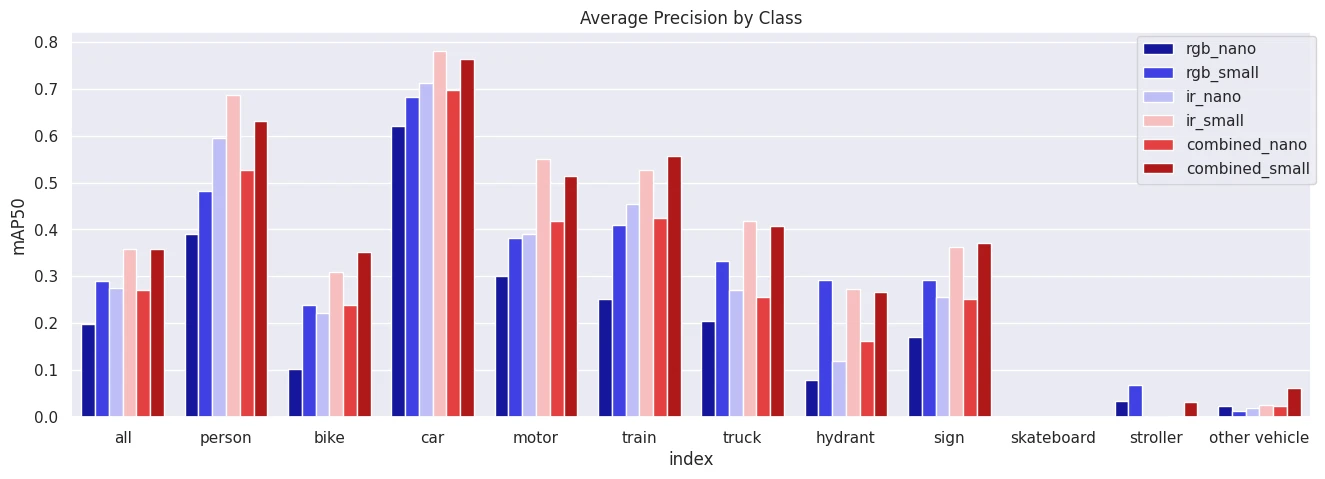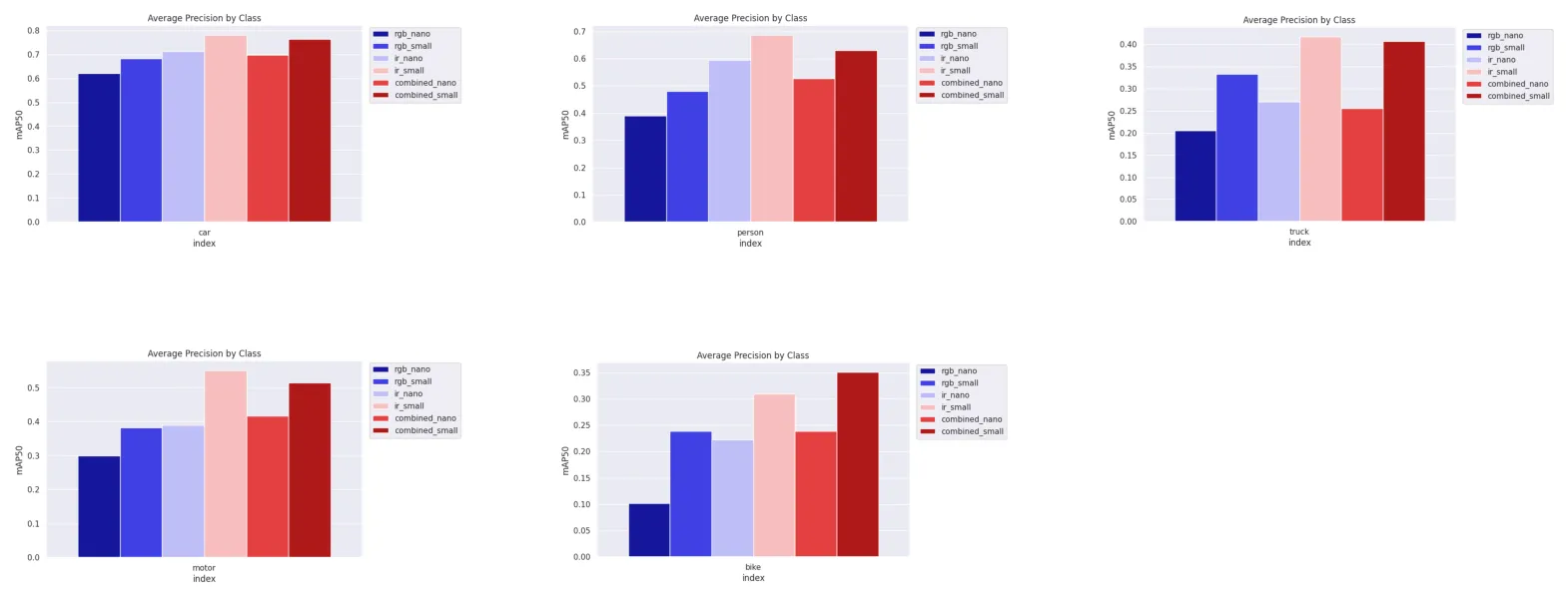Question: Does it make sense to deploy two image classification / object detection models to handle Day (RGB) / Night (IR) cameras? Is there a penalty for combining day and night footage into one big dataset?
Teledyne FLIR Free ADAS Thermal Dataset v2: The Teledyne FLIR free starter thermal dataset provides fully annotated thermal and visible spectrum frames for development of object detection neural networks. This data was constructed to encourage research on visible + thermal spectrum sensor fusion algorithms ("RGBT") in order to advance the safety of autonomous vehicles. A total of 26,442 fully-annotated frames are included with 15 different object classes.
A modified MSCOCO label map was used with conventions that were largely inspired by the Berkeley Deep Drive dataset. The following classes are included:
- Category Id 1:
person - Category Id 2:
bike(renamed from "bicycle") - Category Id 3:
car(this includes pick-up trucks and vans) - Category Id 4:
motor(renamed from "motorcycle" for brevity) - Category Id 6:
bus - Category Id 7:
train - Category Id 8:
truck(semi/freight truck, excluding pickup truck) - Category Id 10:
light(renamed from "traffic light" for brevity) - Category Id 11:
hydrant(renamed "fire hydrant" for brevity) - Category Id 12:
sign(renamed from "street sign" for brevity) - Category Id 17:
dog - Category Id 37:
skateboard - Category Id 73:
stroller(four-wheeled carriage for a child, also called pram) - Category Id 77:
scooter - Category Id 79:
other vehicle(less common vehicles like construction equipment and trailers)
| Thermal Image Annotations | Visible Image Annotations | ||||
|---|---|---|---|---|---|
| Label | Train | Val | Label | Train | Val |
person |
50,478 | 4,470 | person |
35,007 | 3,223 |
bike |
7,237 | 170 | bike |
7,560 | 193 |
car |
73,623 | 7,133 | car |
71,281 | 7,285 |
motor |
1,116 | 55 | motor |
1,837 | 77 |
bus |
2,245 | 179 | bus |
1,879 | 183 |
train |
5 | 0 | train |
9 | 0 |
truck |
829 | 46 | truck |
1,251 | 47 |
light |
16,198 | 2,005 | light |
18,640 | 2,143 |
hydrant |
1,095 | 94 | hydrant |
990 | 126 |
sign |
20,770 | 2,472 | sign |
29,531 | 3,581 |
dog |
4 | 0 | -- | -- | -- |
deer |
8 | 0 | -- | -- | -- |
skateboard |
29 | 3 | skateboard |
412 | 4 |
stroller |
15 | 6 | stroller |
38 | 7 |
scooter |
15 | 0 | scooter |
41 | 0 |
other vehicle |
1,373 | 63 | other vehicle |
698 | 40 |
| Total | 175,040 | 16,696 | Total | 169,174 | 16,909 |
I trained both a YOLOv8n and YOLOv8s model for each case - only RGB images, only IR images and for the combined image dataset. The following are the results for each model, each dataset split by classes:
Note that classes that are underrepresented in the dataset perform abysmal. Personally, I only consider the following classes to be representative for the result of this experiment:
Conclusions:
- Given the quality of the images in this dataset it is easier to identify objects from the thermal / IR images.
- The S-Model always outperforms the N-Model - as expected. It would be interesting to extend this experiment to include the more complex M, L to X-Model variations.
- You need at least the S-Model to be able to work with the mixed (day+night) dataset. There is a penalty for a few classes. But this might not justify the added complexity of using 2 models instead.
